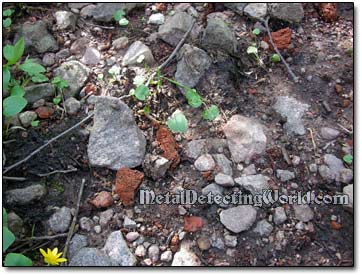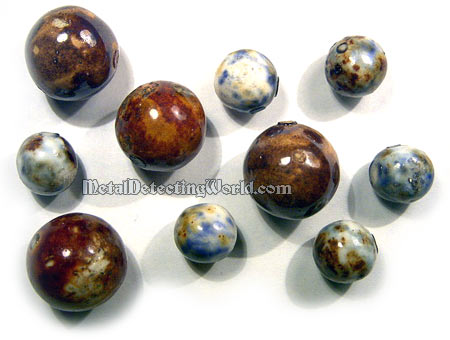Metal Detecting Research and Exploration - A Complete Guide, page 52
Footwork and Observation
SPOTTING POTTERY and CHINA SHARDS ON THE GROUND IN WOODED AREAS
Just like the brick fragments, pottery and china shards help in locating the sites of former villages in the farm fields (see page 59), they also are good indicators of the cellar hole's presence nearby in the wooded area.
Brick Fragments Washed Down onto Abandoned Road by Torrential Rains

Spotting brick fragments in the fields is explained on page 58.
Pay close attention to the sides of elevated grounds and mounds, abandoned roads and creek beds to spot the scattered pieces of bricks, china shards and other nonmetallic objects, such as clam shells, window glass pieces, bottle glass fragments, clay pipe stems, old marbles, and coal, that had been just under the ground surface before being washed down to the creek or exposed by torrential rains or spring torrents.
Old Marbles Found at Homestead Site

Pottery and China Shards Washed Down onto Abandoned Road by Torrential Rains

Non-metallic china shards are always recovered along with metallic finds at the sites of the 18th and 19th century homesteads in North-Eastern US. 90% of shards depict designs, mostly floral, printed in single color. These pieces represent Transferware - a style of ceramics including plateware, dinnerware, pottery, and other delicate items, which was invented and developed in England in 1756 and quickly spread throughout Europe and America.